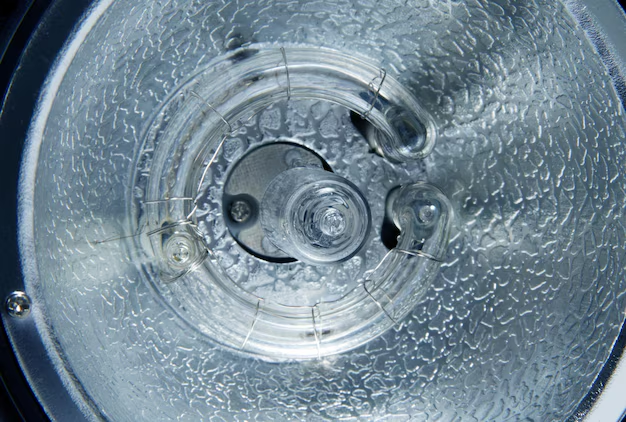Why Is My Fridge Sweating Inside? Understanding the Condensation Conundrum
Opening your refrigerator to find condensation dripping from the walls can be puzzling, if not frustrating. What seems like a simple cooling appliance suddenly feels like a weather experiment gone wrong. In this in-depth article, we explore why your refrigerator might be "sweating" inside and how to address the issue effectively. Whether it's due to temperature settings, usage habits, or mechanical issues, we'll cover all the bases to help you maintain a dry and efficient fridge.
Understanding Refrigerator Condensation
What Is Condensation?
Condensation inside a fridge occurs when warm, moist air comes into contact with the cold surfaces of the refrigerator. This is a standard physical process where water vapor in the air cools and transitions into liquid droplets. While this may seem mundane, recurring condensation can cause various issues, such as food spoilage, mold growth, and energy inefficiency.
How Does the Refrigerator Work?
Understanding how a fridge functions can help pinpoint why condensation might appear. Refrigerators work by moving the heat inside the appliance to its exterior, typically through a system involving a compressor, condenser coils, and evaporator coils. This process keeps the interior cool, but if warm air infiltrates the fridge, condensation can easily occur.
Common Causes of Interior Condensation
Condensation isn't just an isolated mystery—several common factors may contribute to this phenomenon:
Temperature Settings
One of the primary reasons for fridge sweating is improper temperature settings. When the fridge is too warm, it struggles to maintain a dry environment, leading to water droplets inside.
- Tip: Ensure your refrigerator is set to the recommended temperature, usually around 37°F (3°C) for the fridge section and 0°F (-18°C) for the freezer.
Door Seals and Gaskets
Faulty or worn-out door seals can allow warm air to seep into the fridge, leading to condensation. It's essential to check your door gaskets for any tears or gaps.
- Tip: Regularly clean and inspect door seals. A quick test is to close the door on a piece of paper; if it slides out easily, the seal may need replacing.
Refrigerator Usage
Frequent opening of the fridge door introduces warm, moist air inside. This is especially common during gatherings or when the fridge is in a high-traffic area.
- Tip: Minimize how often you open the fridge and try to organize contents for quick access.
Humidity Levels
High household humidity levels can also affect moisture build-up inside your refrigerator. Homes in naturally humid environments may experience more condensation.
- Tip: Consider using a dehumidifier in your kitchen or ensure proper ventilation.
Technical Issues Leading to Condensation
At times, condensation may be indicative of mechanical issues within the refrigerator:
Faulty Thermostat
A malfunctioning thermostat can cause the fridge to run at incorrect temperatures, leading to condensation.
- Tip: If you suspect a thermostat issue, consider having a professional evaluate it.
Drain Blockages
Refrigerators typically have a drainage system to manage defrost water. If blocked, this can result in internal moisture build-up.
- Tip: Regularly check and clean the drain hole to prevent blockages.
Insulation Problems
Poor insulation in your fridge can cause temperature differences that lead to internal condensation.
- Tip: Insulation repairs can be complex, so consulting a professional may be necessary.
Preventative Measures and Solutions
Once you've identified the possible causes, several preventative steps can help mitigate or eliminate condensation:
Routine Maintenance
Regular checks and maintenance are key to keeping your refrigerator in optimal condition.
- Inspect door seals monthly.
- Clean refrigerator coils semi-annually to ensure efficient operation.
Temperature and Humidity Management
Maintaining the right balance in your refrigerator is critical:
- Adjust the thermostat as needed.
- Keep an eye on kitchen humidity using a hygrometer.
Organized Storage
How you store food can also impact moisture levels within the fridge:
- Use airtight containers to minimize humidity.
- Avoid overpacking the fridge to allow for proper air circulation.
Professional Assistance
When DIY solutions don't resolve the issue, it's time to seek professional help.
- Schedule a technician if you notice persistent issues despite attempting the above interventions.
Practical Tips and Summary
To help you on this journey to a sweat-free fridge, here's an easy checklist of practical DIY solutions 📝:
- 🔍 Regularly check and clean door seals.
- 📏 Set proper temperature settings for optimal performance.
- 🚪 Minimize door openings and organize food for easy access.
- 🧼 Maintain a clean drainage system to prevent blockages.
- 🌡️ Monitor indoor humidity levels to minimize moisture.
Having these handy tips can substantially prolong the life of your fridge while ensuring it remains efficient and free from excess moisture. Remember, a little routine maintenance goes a long way in preserving your appliance and its contents!
By addressing the issue of condensation proactively, you'll create a more reliable food storage environment, eliminate pesky puddles lurking on shelves, and make that next midnight refrigerator raid a drip-free experience. Whether you're a homeowner or renter, understanding the dynamics of your refrigerator's environment can save both food and frustration.
